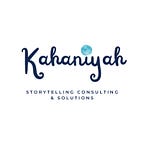Drowning in information, searching for context, looking for inspiration, hoping for change.
Just about all of us, now?
My humble solution: ways to bring everyday impact and change, in our work, through storytelling. Will keep sharing short nuggets on practical storytelling changes we can bring, at work. Here are the first 2.
Lesson 1
Imagine, I tell you this- “I used a multi-tuned tool to process a starch resource.” What am I even saying?
Translated to simple English, it means, I used a fork to eat a potato.
Simplicity is one of the best gifts for authentic storytelling. One of my key lessons, working on data-driven narratives over the last few years at Kahaniyah. Yet, jargons and obfuscations often keep us from getting there.
One way is to do a quick readability check (Flesch Kincaid Readability score) which gives an indication of how readable the text is. Lesser the score, more readable the text. Scores less than 10 are considered good for general business audience.
So next time we try to use storytelling at work, let’s check for simplicity?
(P.S. This tested 7 on readability score.)
Lesson 2:
In the movie, The Big Short, (based on the book by Michael Lewis), the celebrated chef, Anthony Bourdain, explains Collateralized Debt Obligation in a highly “fishy” way:)
“OK, I’m a chef on a Sunday afternoon, setting the menu at a big restaurant. I ordered my fish on Friday, which is the mortgage bond that Michael Burry shorted. But some of the fresh fish doesn’t sell. I don’t know why. So, what am I going to do? Throw all this unsold fish, which is the BBB level of the bond, in the garbage, and take the loss? No way. Being the crafty and morally onerous chef that I am, whatever crappy levels of the bond I don’t sell, I throw into a seafood stew. See, it’s not old fish. It’s a whole new thing! And the best part is, they’re eating 3-day-old halibut. *That* is a CDO.”
He used a metaphor to explain an esoteric concept. Does it work? Metaphors help connect with a story, through a known context. So next time we are explaining a complex idea, let’s test the metaphor power?
One tip: keep the metaphor simple and visual and continue the connect between metaphor and your story throughout, not dropping it midway.
